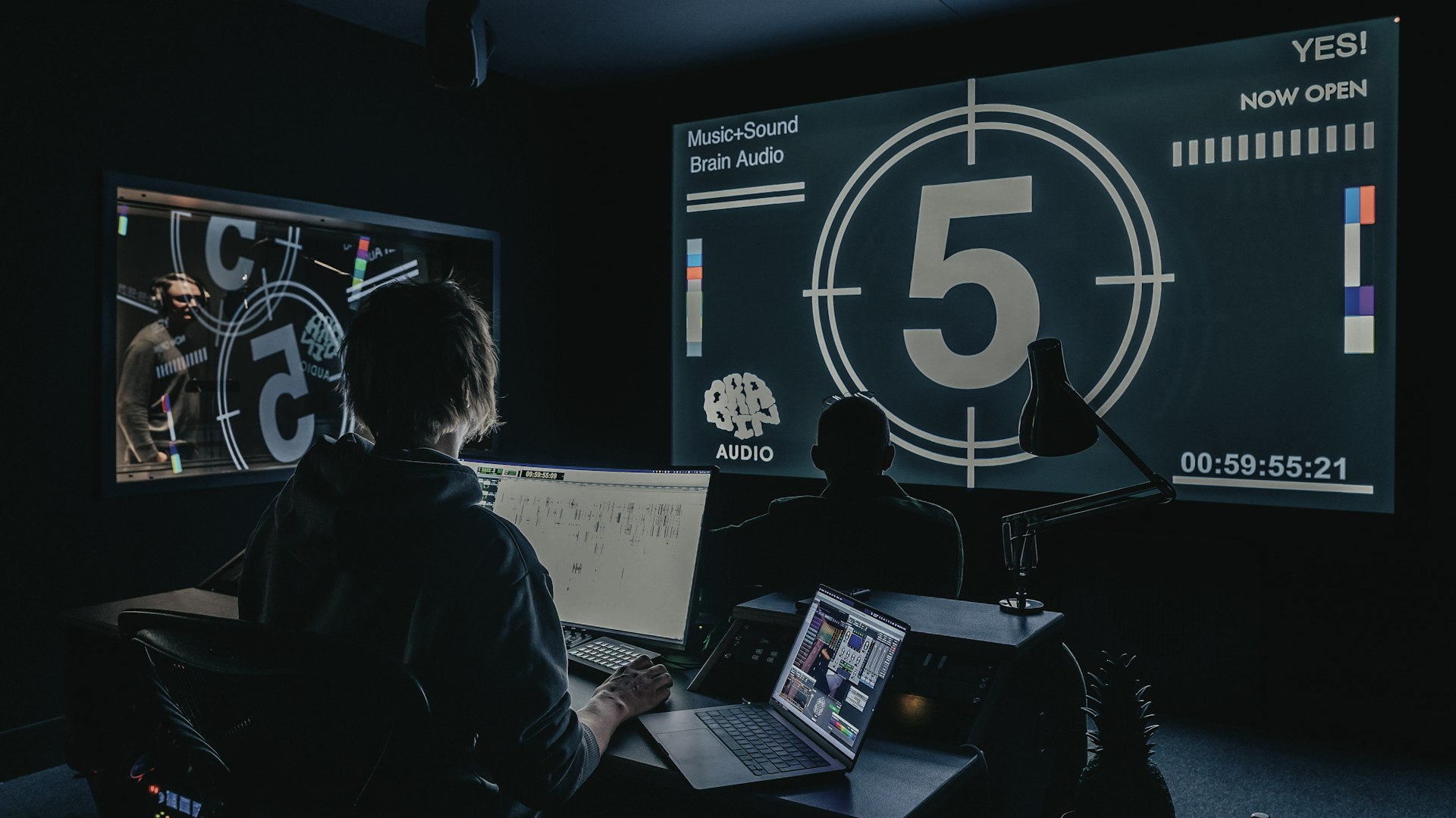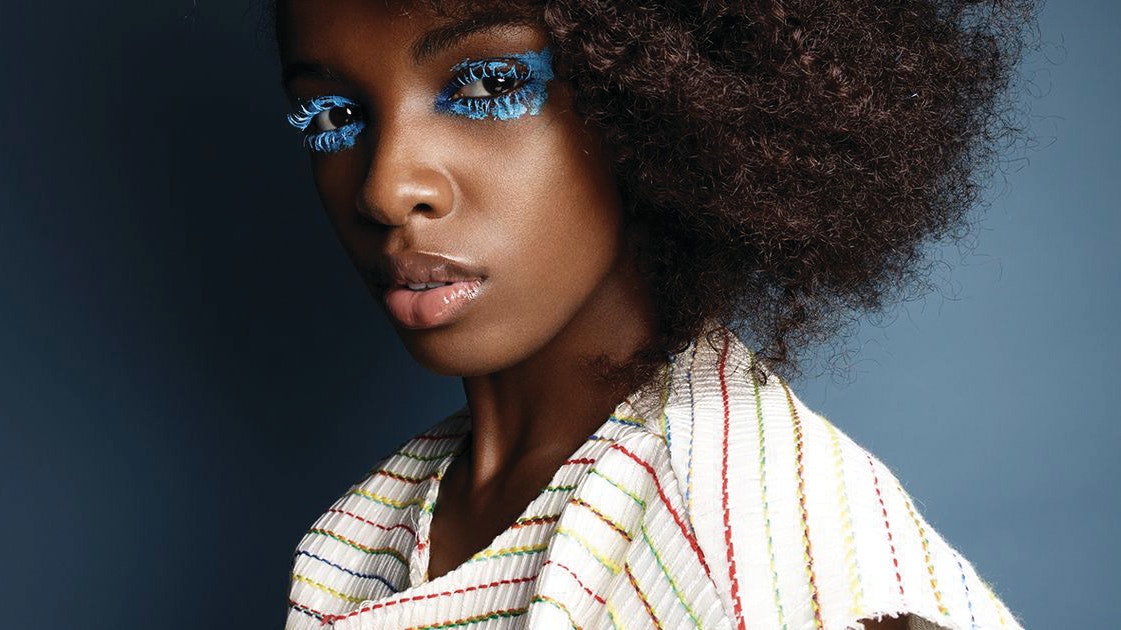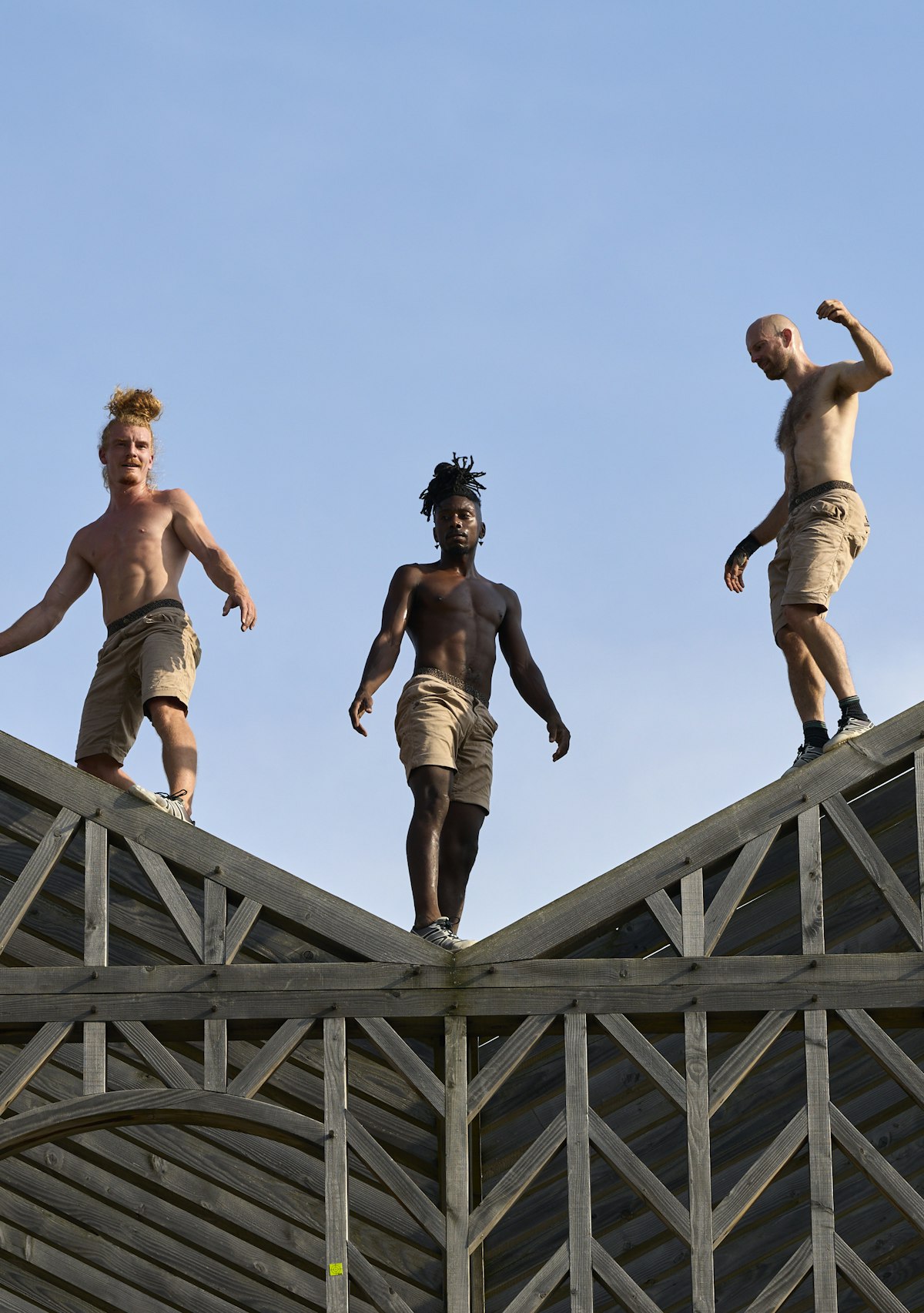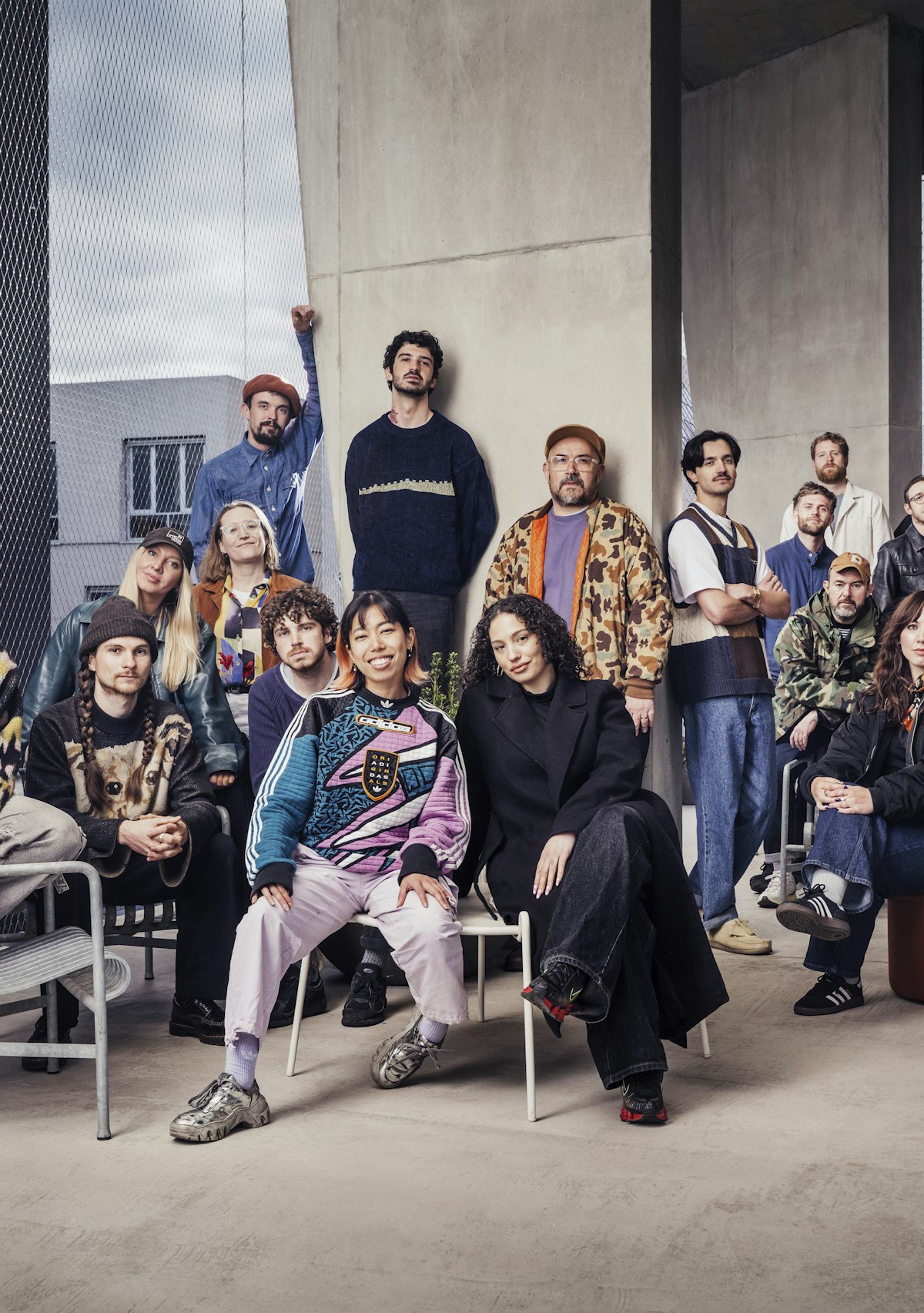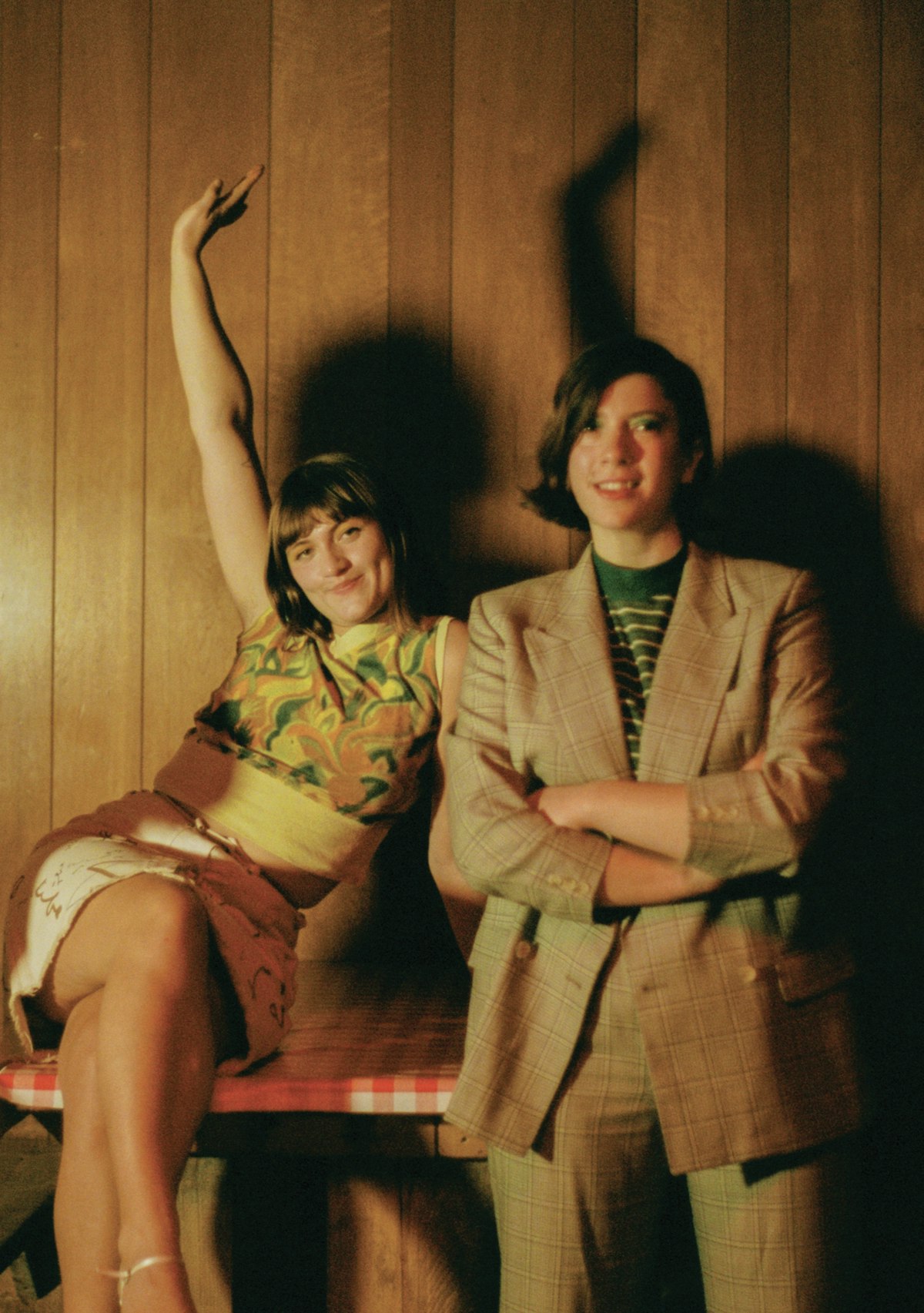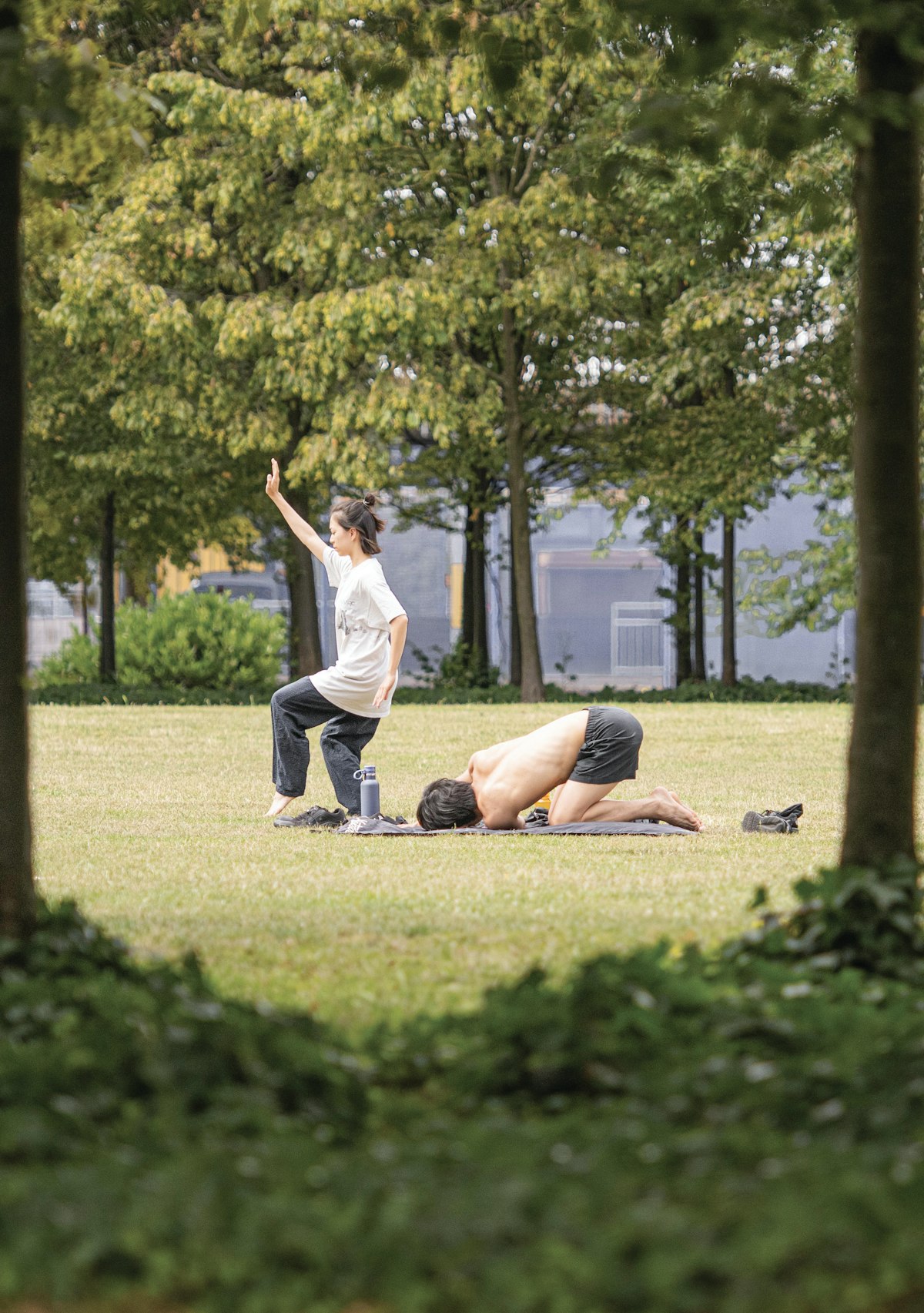
Sound and Vision
Brain Audio has transformed its space in the Design District into a cutting-edge audio post-production studio, complete with a Dolby Atmos rig and a delightfully physical Foley stage. Co-founder Chris Branch explains how it unlocks new creative opportunities.
Tell us a bit about Brain Audio and what you’re working on right now
We make sound and music for moving image, and nonlinear stuff too. So we're working on the sound and music for a 16 episode animated series for Netflix. We've just finished the Headspace XR app for Meta, a VR experience for mental wellbeing. And then we’re mixing a feature film, which is going into the Directors’ Fortnight at Cannes this year. It’s a broad, diverse mix of work, which we’re quite proud of.
You’ve been going for 25 years. How did it start?
Tom and I met at the Guildhall School of Music, we studied composition. He’s a great drummer and percussionist, I play guitar and piano and all kinds of string things and keyboards. When we started out we wrote music together, sitting at the mixing desk side by side. It’s quite funny to think of it now, because these days we work on multiple projects each. We still make sure we’re a pair of ears for each other, and even though we’ve got different technical skills, we all know how to tell stories with sound.
How do you approach telling stories with sound?
For me, it's about finding the most efficient, economical way of conveying a moment. What's the single thing that is going to express it? It's a process of putting loads of things in and then taking almost all of them out again. It’s the same for a feature film, or for 360 degree spatial audio in a virtual reality environment.
A core part of Brain Audio’s ethos is about real music made in the real world. Can you give us an example?
Yes – in Headspace XR there’s an exercise to develop mindful movement. You collect energy particles in a very beautiful space. We made the particle collection sounds from tapping a pair of pebbles together. Then it goes into digital processing software to make the sounds respond to behaviours in the game. It goes from physical sound to a digital application in about 10 minutes - it’s a really exciting process, it never gets old.
How does the rise of AI-generated audio change things? Is it going to steal your lunch, or make more lunch?
I suspect it’s probably both. There's been a massive technological development since we started out, which has had a big impact on the work we do and how accessible it is to people. It’s possible to do some of what we do with a pair of headphones and a laptop under a duvet. And sample libraries are getting more and more realistic. AI will accelerate that, and it might replace some parts of the process. But what I love is working in a team with people, I love the sense of togetherness. AI will never replace people working together as a team.
You spent your early childhood on a Caribbean island, making instruments out of anything you can find. Do you see it as coming full circle, tapping pebbles together?
[Laughs] It’s more that you end up as a sponge of everything you’ve ever done. So rather than full circle, it’s full sponge.
Why did you choose the Design District for your new studio?
I read about it in the Metro. Our old studio in Hackney was being turned into flats. We looked at loads of spaces but we’ve got quite specific needs for the Dolby Atmos studio - you need high ceilings and lots of space. When we saw this unit, it was just right, a blank canvas. It was a good fit from the beginning.
How does being in the Design District change the kind of work you do?
The whole idea of this place is to be very economical in the way we set it up. We’re not in such a flashy postcode, but we've got absolutely world-class facilities. So you get a Dolby Atmos mixing theatre, but in a setup that is accessible to more creative, art-driven projects.
Being here gives us more flex on the projects we can take on, so we can support artists and independent film in a way that other places may not be able to because of the pressures of their overhead costs.
We’re passionate about keeping our art practice too. We believe that commercial work can feed artistic practice and vice versa: hardly anything is either one or the other, it’s a spectrum. The joy of building a facility like this is exploring what’s possible here.


